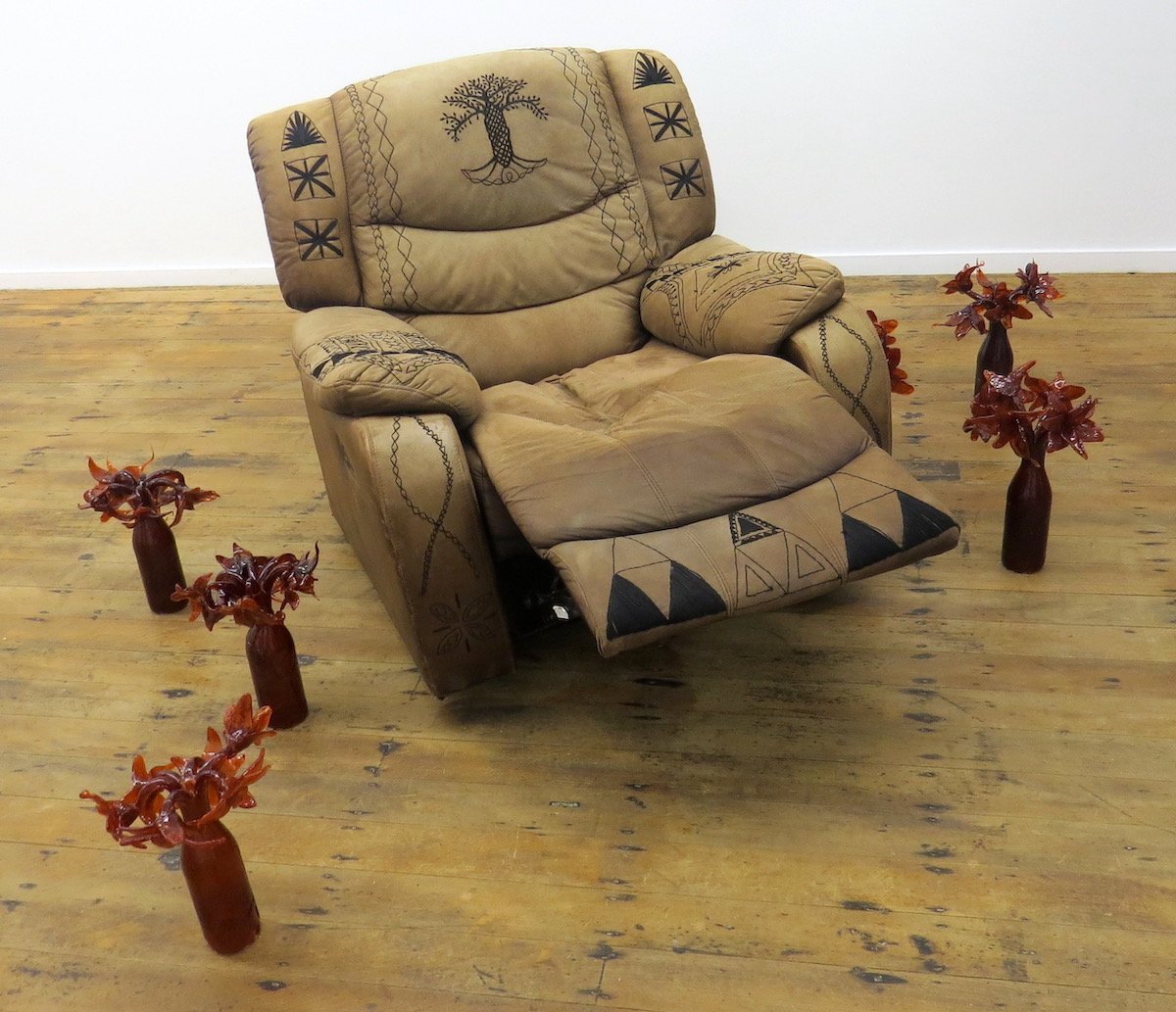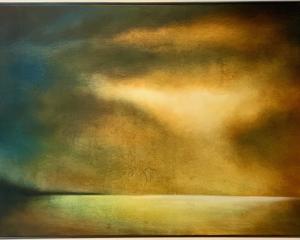
(Gallery De Novo)
Readers who know Angela Burns’ art may get a surprise looking at her latest exhibition at De Novo.
While much of Burns’ style is intact, these pieces are far more clearly representational than much of the artist’s former oeuvre. The play of light, expressed in broad sweeps of colour, remains present, but distinctive landforms are also clearly depicted — islands, fences, and hillsides. Burns’ strong gestural strokes are still the basis of much of the art, but the lure of the photographic has led the artist to produce more strongly grounded landscapes.
Inspired by photographs of the view from Double Hill Rd above Waitati, the artist has created a series of images which move between the tangible and the intangible, with plays of light on the water framed by the hills around Blueskin Bay. At times, especially when focusing on the water and sky, such as Lavender Haze over Blueskin Bay, the images have the same free abstraction as Burns’ earlier works. In other pieces, the land is clearly delineated without losing the airy impressionism of the more ethereal pieces.
A major surprise is the use of acrylic on both canvas and paper; the latter pieces using deft washes of colour that give them more the feel of gouache or heavily applied watercolour.

(Blue Oyster Art Project Space)
"Through the Fray" brings together work by three recent graduates from Dunedin School of Art. All three explore personal, political, or cultural journeys towards coming of age.
In the case of Zac Whiteside, the struggles to be seen as a "true Kiwi bloke" and "one of the team" are brought into focus by a washing line filled with rugby jerseys fashioned out of steel wool. The duality of the material — abrasive yet polishing — connects with the often brutal process by which young New Zealanders are shaped into adulthood.
Jude Hanson Stevens asks questions of the tactics by which European settlers claimed land in New Zealand using the concept of "Terra Nullius" ("Uninhabited land"). The artist presents a prosaic fence constructed from items salvaged from farm land. The ubiquitous No 8 wire brings with it association of makeshift solutions, and the tōtara posts have echoes not only of farm demarcation but also of traditional pouwhenua.
Isabella Lepoamo examines cross-cultural memories, turning a battered La-Z-Boy armchair and discarded beer bottles, the signs of adulthood on the decline, into a Samoan throne, decorated with siapo patterns and surrounded by lilies. There is sadness here, but also strength and pride in the memory of the artist’s father and grandfather, trying to create a new home in a new land.

(Hutch)
Simon Attwooll presents an intriguing exhibition at the new Hutch Gallery in Moray Pl.
Working from found photographs of the aftermath of a house fire, the artist creates images which honour a loving memory of the house as it was, while simultaneously using the remains from a house fire as his medium. Crushed and refined charcoal powder from a burnt-out property is used as the medium, rubbed in great clouds over images of fire sites.
What emerges are smoky images that seem reminiscent of early daguerrotypes and tintypes, photographs blurred by distant memory and faded with dust. We experience the visceral feel of the destroyed properties, the detritus of what was once a home. In some cases, the work has been compartmentalised by the addition of empty matchbox drawers to the surface, making the image into an almost forensic grid.
Are we supposed to be trying to find the source or cause of the conflagration?
Among the sooty black, one pale work stands out, almost as a ghost of a house, presented in palest acrylic grey on white. It is as if the spirit of the house still haunts the site, waiting for a release that understanding of the fire alone can bring.
By James Dignan











